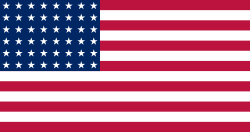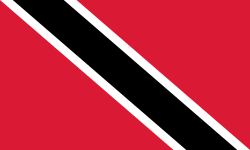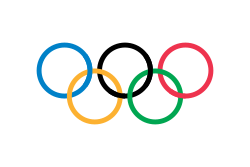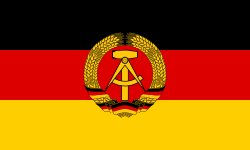Armin Hary
| Armin Hary | |
|---|---|
 | |
| Narození | 22. března 1937 (86 let) Quierschied |
| Povolání | atlet a sprinter |
| Ocenění | Stříbrný vavřínový list Kříž Řádu za zásluhy Spolkové republiky Německo Síň slávy německého sportu |
| Web | www |
| Některá data mohou pocházet z datové položky. | |
| Přehled medailí | ||
|---|---|---|
| zlato | LOH 1960 | běh na 100 m |
| zlato | LOH 1960 | štafeta 4 × 100 m |
| Mistrovství Evropy v atletice | ||
| zlato | ME 1958 | běh na 100 m |
| zlato | ME 1958 | štafeta 4 × 100 m |
Armin Hary (* 22. března 1937 Quierschied) je bývalý německý atlet, sprinter, dvojnásobný olympijský vítěz.
Sportovní kariéra
Ve dvaceti letech, v roce 1957, se stal mistrem Německa v běhu na 100 metrů. O rok později, na mistrovství Evropy ve Stockholmu, zvítězil v běhu na 100 metrů a byl členem vítězné německé štafety na 4 × 100 metrů.[1]
V roce 1960 zaběhl jako první člověk na světě 100 metrů za 10,0 a vytvořil tak nový světový rekord. Na olympiádě v Římě pak zvítězil ve finále běhu na 100 metrů časem 10,2 a byl členem vítězné štafety společného německého týmu. Jejími členy byli kromě Haryho Bernd Cullmann, Walter Mahlendorf a Martin Lauer. Jejich čas 39,5 znamenal vyrovnání světového rekordu. Pro porušení předpisů západoněmeckého atletického svazu byl potrestán ročním zákazem činnosti, poté ukončil svoji sportovní kariéru.
Odkazy
Reference
- ↑ Armin Hary atletickou legendou (1960) | Slavné sportovní okamžiky | Stream. [s.l.]: [s.n.] Dostupné online.
Externí odkazy
 Obrázky, zvuky či videa k tématu Armin Hary na Wikimedia Commons
Obrázky, zvuky či videa k tématu Armin Hary na Wikimedia Commons - 1960 Video Armin Hary atletickou legendou
- Výkony a lidé, kteří posouvali hranice
- PUMA vs Adidas
- Armin Hary v databázi Olympedia (anglicky)
Média použitá na této stránce
Olympic Rings without "rims" (gaps between the rings), As used, eg. in the logos of the 2008 and 2016 Olympics. The colour scheme applied here was specified in 2023 guidelines.
Olympic Rings without "rims" (gaps between the rings), As used, eg. in the logos of the 2008 and 2016 Olympics. The colour scheme applied here was specified in 2023 guidelines.
US Flag with 45 stars. In use 4 July 1896–3 July 1908. Created by jacobolus using Adobe Illustrator, and released into the public domain. This flag was used during the Spanish-American War.
US Flag with 45 stars. In use 4 July 1896–3 July 1908. Created by jacobolus using Adobe Illustrator, and released into the public domain. This flag was used during the Spanish-American War.
US Flag with 46 stars. In use 4 July 1908–3 July 1912. Created by jacobolus using Adobe Illustrator, and released into the public domain.
Other version: Image:US 46 Star Flag.svgUS Flag with 48 stars. In use for 47 years from July 4, 1912, to July 3, 1959.
Flag of the unified Team of Germany for the Olympic Games, 1960–1968.
(c) I, Cmapm, CC BY-SA 3.0
The flag of the Soviet Union (1955-1991) using a darker shade of red.

(c) I, Cmapm, CC BY-SA 3.0
The flag of the Soviet Union (1955-1991) using a darker shade of red.

Olympijská vlajka
Flag of Jamaica. “The sunshine, the land is green, and the people are strong and bold” is the symbolism of the colours of the flag. GOLD represents the natural wealth and beauty of sunlight; GREEN represents hope and agricultural resources; BLACK represents the strength and creativity of the people. The original symbolism, however, was "Hardships there are, but the land is green, and the sun shineth", where BLACK represented the hardships being faced.
Flag of Portugal, created by Columbano Bordalo Pinheiro (1857-1929), officially adopted by Portuguese government in June 30th 1911 (in use since about November 1910).
National flag and merchant ensign of Germany from 1933 to 1935.
National flag and merchant ensign of Germany from 1933 to 1935.
Vlajka České republiky. Podoba státní vlajky České republiky je definována zákonem České národní rady č. 3/1993 Sb., o státních symbolech České republiky, přijatým 17. prosince 1992 a který nabyl účinnosti 1. ledna 1993, kdy rozdělením České a Slovenské Federativní republiky vznikla samostatná Česká republika. Vlajka je popsána v § 4 takto: „Státní vlajka České republiky se skládá z horního pruhu bílého a dolního pruhu červeného, mezi něž je vsunut žerďový modrý klín do poloviny délky vlajky. Poměr šířky k její délce je 2 : 3.“
US Flag with 46 stars. In use 4 July 1908–3 July 1912. Created by jacobolus using Adobe Illustrator, and released into the public domain.
Other version: Image:US 46 Star Flag.svgUS Flag with 44 stars. In use 4 July 1891–3 July 1896. Created by jacobolus using Adobe Illustrator, and released into the public domain.
National flag and merchant ensign of Germany from 1933 to 1935.
Armin Hary at the 1960 Olympics
The Canadian Red Ensign used between 1921 and 1957.
This image has compared for accuracy (mainly colors) using an image from World Statesmen. The only change is making the maple leaves green from red. This image has compared for accuracy (mainly colors) using an image from World Statesmen. The most recent version of this image has changed the harp into one with a female figure; see [http://flagspot.net/flags/ca-1921.html FOTW




























